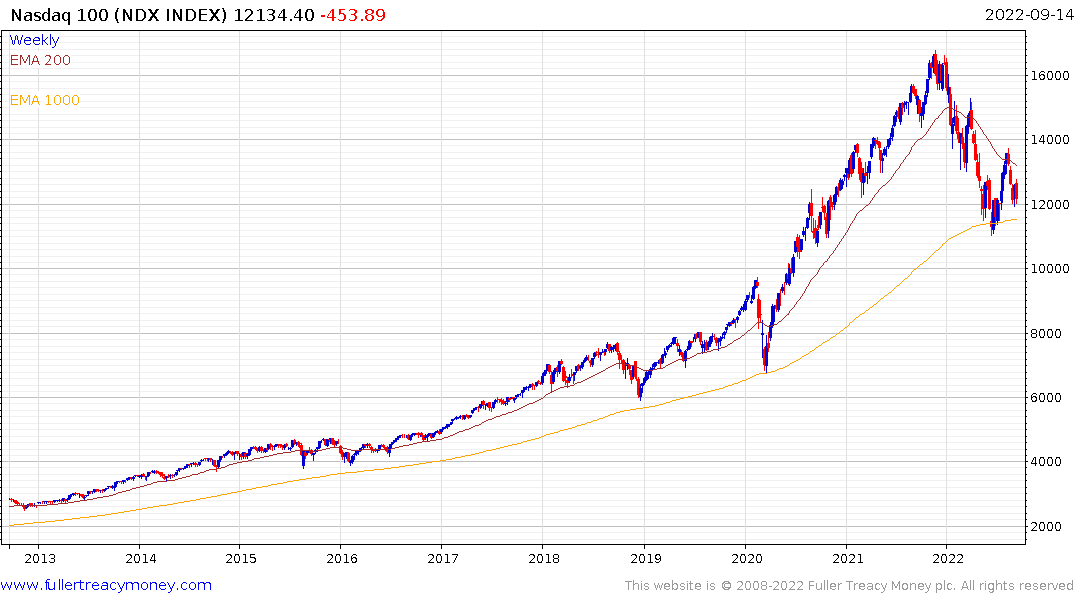It Starts With Inflation
This article by Ray Dalio may be of interest to subscribers. Here is a section:
I think it looks like interest rates will have to rise a lot (toward the higher end of the 4.5 to 6 percent range) and a significant fall in private credit that will curtail spending. This will bring private sector credit growth down, which will bring private sector spending and, hence, the economy down with it.
Now, we can estimate what that rise in rates will mean for market prices and economic growth. The rise in interest rates will have two types of negative effects on asset prices: 1) the present value discount rate and 2) the decline in incomes produced by assets because of the weaker economy. We have to look at both. What are your estimates for these? I estimate that a rise in rates from where they are to about 4.5 percent will produce about a 20 percent negative impact on equity prices (on average, though greater for longer duration assets and less for shorter duration ones) based on the present value discount effect and about a 10 percent negative impact from declining incomes.
Now we can estimate what the fall in markets will mean for the economy i.e., the "wealth effect." When people lose money, they become cautious, and lenders are more cautious in lending to them, so they spend less. My guesstimate that a significant economic contraction will be required, but it will take a while to happen because cash levels and wealth levels are now relatively high, so they can be used to support spending until they are drawn down. We are now seeing that happen. For example, while we are seeing a significant weakening in the interest rate and debt dependent sectors like housing, we are still seeing relatively strong consumption spending and employment.
The upshot is that it looks likely to me that the inflation rate will stay significantly above what people and the Fed want it to be (while the year-over-year inflation rate will fall), that interest rates will go up, that other markets will go down, and that the economy will be weaker than expected, and that is without consideration given to the worsening trends in internal and external conflicts and their effects.
US rail workers are about to go on strike. By now the pattern is familiar. The companies they work for are making record profits and the wages have not kept up with inflation. This will also again highlight the disparity between the benefits of union workers versus less well represented groups. This is exactly the kind of evidence of a wage price spiral the Fed is seeking to avoid by hiking rates aggressively.
Bridgewater’s team have already opined that it will take at least two cycles to get inflation under control. That makes sense to me. To completely kill off inflationary pressures the Fed would need to initiate a deep recession and resist flooding the market with liquidity when unemployment spikes.
That would risk a depression, so it is more likely they will instead cut rates when unemployment rises but would begin to remove liquidity faster than normal on this occasion. Short sharp contractions and short sharp recoveries are akin to what was seen in the 1970s and are now the most likely scenario in this decade.

The Nasdaq-100 has found support in the region of the 1000-day MA on repeated occasions for 13 years. The buy-the-dip instinct prevailed during the rebound from the June retest but the price is falling back towards that level again. A sustained move below the 1000-day MA would confirm an end to the outperformance of the technology and mega-cap sectors.


